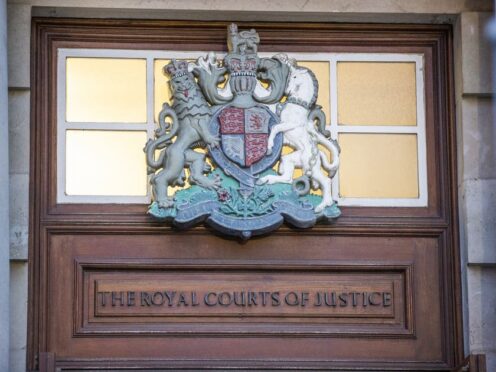A former soldier present at an incident where three IRA men were killed contended he fired “aimed shots” believing his colleagues were in danger.
The veteran, known as Soldier F, has refused to testify in person at the inquest into the deaths of Peter Ryan, Tony Doris and Lawrence McNally in Coagh, Co Tyrone.
The men were intercepted on June 3 1991 in a stolen car by SAS soldiers who believed they were intending to murder a member of the security forces.
All three were shot dead in a hail of gunfire. Previous inquest hearings were told up to 150 rounds were fired.
Mr Justice Michael Humphreys took legal action in a bid to secure Soldier F’s attendance at the inquest into the men’s deaths.
The ex-soldier was recently sentenced to six months in prison in Scotland for contempt of court for refusal to comply with a subpoena to give evidence.
His lawyers cited mental health issues in arguing why he should not be compelled to give evidence.
The proceedings in Scotland are subject to an appeal that was listed for April.
At a previous hearing of the inquest earlier this month, Mr Justice Humphreys said the timescales involved meant that the inquest would have to conclude without hearing from the veteran.
Under the Government’s Legacy Act, legacy inquests in Northern Ireland need to conclude hearing evidence by a deadline of May 1 this year.
The bulk of evidence has already been heard in the Coagh inquest, apart from Soldier F’s testimony.
The former serviceman is not the same person as the Soldier F who is facing two counts of murder over the shooting of 13 civil rights protesters in Londonderry in 1972, an event known as Bloody Sunday.
An inquest review hearing in Belfast on Friday heard a statement from Soldier F.
The evidence included police interview notes dated June 5 1991 and a five-page statement by Soldier F dated November 10 2022.
The statement, which was read to the court, included Soldier F saying he had “struggled with ill health for some time” and with “recent bereavement issues”, but said he had “done his best to assist in this inquest”.
He said he was a member of the special military unit (SMU) involved in a planned arrest operation in Coagh in May-June 1991.
It was described as being directed at terrorists believed to be targeting an individual who had a routine of sitting in a car park reading a newspaper each morning.
“Our task was to effect an arrest if any terrorists turned up and attempted to kill the intended victim,” Soldier F said in the statement.
He described recces carried out in advance for the location which was “difficult to cover” as it could be approached from several directions and was a residential area.
It was planned to conceal soldiers in an improvised Bedford truck.
Soldier F said the operation took place on May 31, and described wearing civilian clothes but with a uniform in a bag to change into “so the terrorists would be in no doubt it was an Army arrest operation if we confronted them”.
But on that day, the operation was stood down and the soldiers returned to base.
They returned on June 3.
“I can say it was a hard arrest operation with the use of lethal force only as a last resort,” Soldier F said in his statement.
After arriving in Coagh, Soldier F said he changed into military uniform.
“The first message I can recall coming over the radio were the words ‘stand by, stand by’, followed quickly by ‘go, go, go’,” he said.
“I started running down the laneway to the corner of the hotel. I can recall hearing shots being fired. I have no idea how many or what calibre but knew this was an engagement with terrorists.
“I could see a car crashed into the wall at the side of the road approximately 40-50 yards up the road. I recall seeing two people inside the car. One in the rear was pointing a rifle in the direction of the lorry. I believe he was about to fire or was maybe firing.
“After so long, all I can now say is there was firing going on. I could not distinguish between the noise of the shots. I felt the soldiers in the lorry were at risk so I fired aimed shots at the individual with the rifle. I do not recall how many shots I fired.
“This was the only location that I fired from.
“I did see another figure in the car in the front but my concentration was on the terrorist in the back.
“I cannot be certain whether I hit that terrorist in the rear, but when I lost sight of him I stopped firing. I recall that other SMU members were moving forward. I can’t say who fired … this all took place in a matter of seconds.
“I heard soldiers shouting ‘stop’, and I also shouted ‘stop’ meaning for anyone around me if still firing to stop. This is normal SOP (standard operating procedure).
“At some point I recall seeing substance alight beneath the car and the car went up very fast.”
Soldier F also said there was no preparation for being interviewed by police at the time.
The inquest heard that this concluded the evidence.
The coroner said he would deliver provisional findings in the case on April 11.
“There will be some time after afforded to parties to consider the findings before I make them final,” he added.
